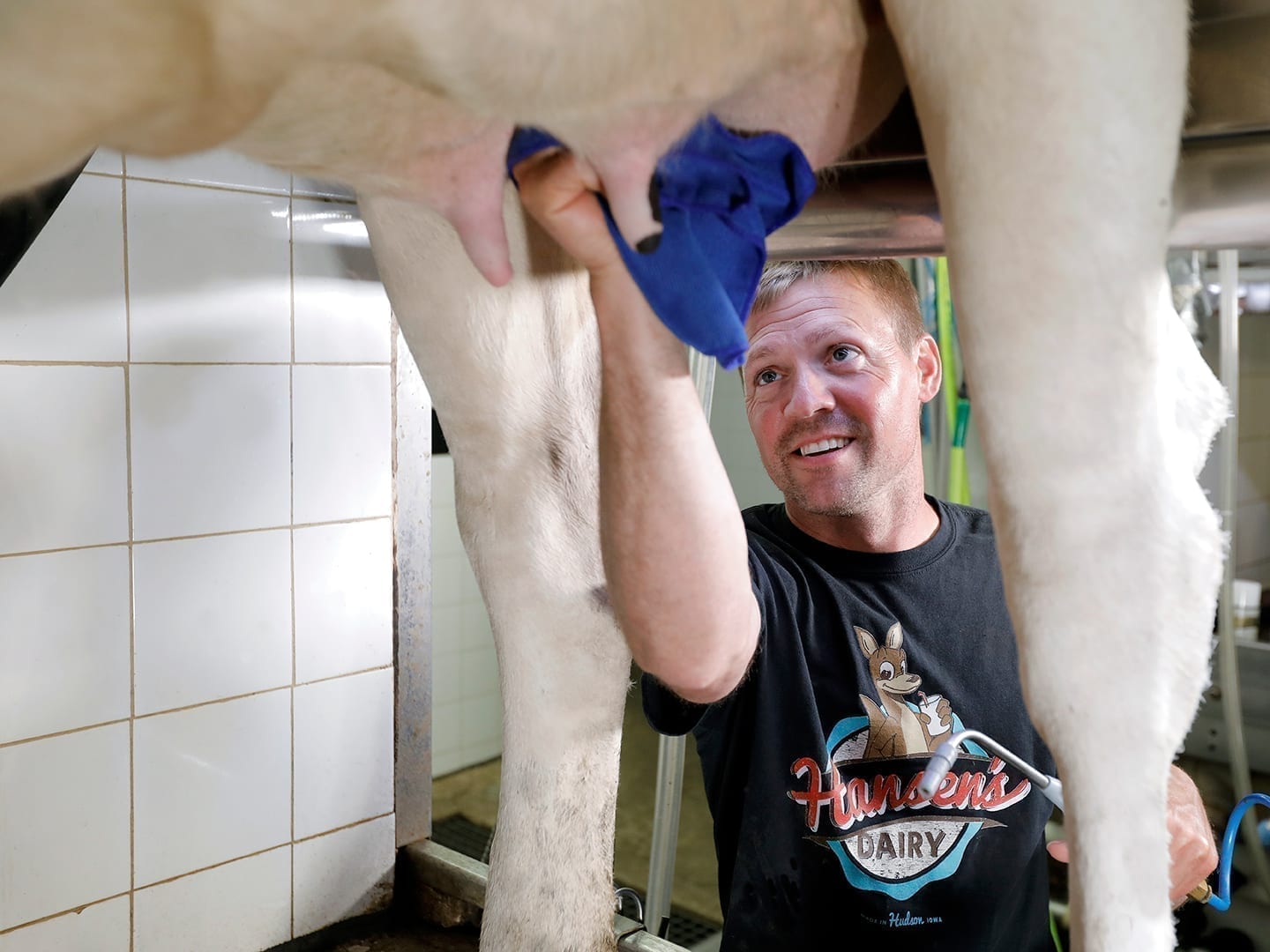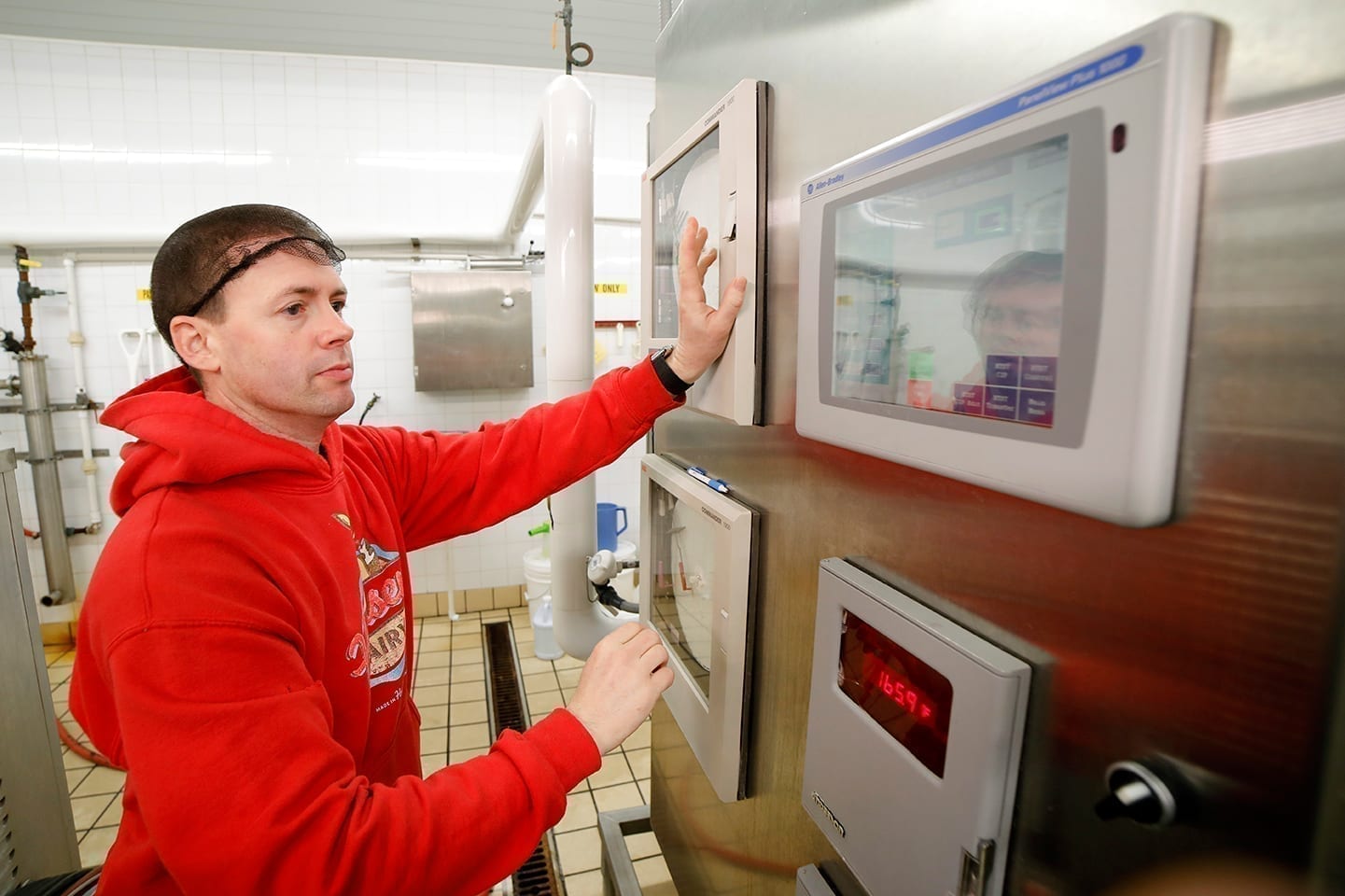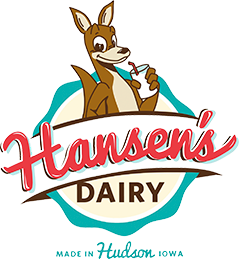HOW IT’S MADE: ‘Legendairy’ milk!
June 11, 2019 7:43 am
Brad Hansen and Hannah Nelson bottle half-gallons of whole milk at the Hansen’s Dairy farm creamery in Hudson, Iowa.
It’s June Dairy Month, and here at Hansen’s Dairy, we are celebrating all of our fresh dairy products! Each week in June we will post a new segment in our “How It’s Made” series. This week we are featuring our genuine, nutritious and delicious milk!
In February of this year, we celebrated the 15th anniversary of processing our own milk on the farm. We have been so blessed to live in an area where the community supports us local food producers. With the low milk prices of the dairy industry today, many small dairy farmers are going out of business. We are fortunate that we have been able to support five owner families and employ another 25 people while living this dream of ours.

Blake Hansen preps cows for milking at Hansen’s Dairy farm in Hudson, Iowa.
We currently milk about 130 purebred Holsteins twice a day. Our cows are born and raised on our farm and are never treated with growth hormones. The milk is processed three times a week and distributed to dozens of places in Eastern Iowa.
Here are a few things that make our milk different from many other brands of milk on the shelf:
- Hansen’s Dairy produces creamline (non-homogenized) milk, so the cream rises to the top. Homogenization breaks up the fat globules of milk so that the particles are uniformly sized and won’t separate. Since Hansen’s milk is non-homogenized, that means that the cream rises to the top. It should be shaken before being served. Unlike pasteurization (heating the milk to kill bacteria), homogenization is not required to sell milk. We choose not to homogenize to keep the milk in its most natural state. Some people who have trouble digesting milk have told us that they don’t have a problem with our milk, which we attribute to the non-homogenization. If that’s you, maybe you should give it a try!
- Our milk is extremely fresh. The milk a cow gives on the morning of a processing day is pasteurized, delivered to our retail stores, and could be bought and served at your table that night.
- Our milk is “single source,” which means it comes only from our closed herd of cows. At larger processing plants, many different farms’ milk is being blended together. You can tour our farm and see exactly where the cows live, what they eat and how they are milked. And then you know exactly what goes into the jug!
So how is it processed?
Check out the video below for actual footage of processing milk in our creamery.
We process whole, 1% and skim milk into gallons and half-gallons three times each week.
The first step in the process is to send the milk through the cream separator, which clarifies the milk and also removes some of the fat.

Cream is collected from the milk separator and bottled as heavy whipping cream, and is also used to make butter and ice cream at Hansen’s Dairy creamery in Hudson, Iowa.
The cream that is collected from the separator is later packaged as heavy whipping cream in quarts and gallons or used to make our butter and ice cream.
The next step is to pasteurize the milk. This process heats the milk to at least 165 degrees for 15 seconds to eliminate any bacteria.

Brad Hansen operates the pasteurizer at the Hansen’s Dairy creamery in Hudson, Iowa.
After being pasteurized, the milk is ready to be bottled. Labels are placed on the empty jugs. The jugs travel on the conveyor belt to the carousel where milk fills the jug. Another machine stamps the sell-by date on the jug.
The cap is then put in place and sealed. The full jug travels down the conveyor belt and into the cooler. There the milk will be stacked in crates and put on the delivery truck. Hansen’s milk is delivered to our own retail stores and other grocery stores, restaurants, coffee shops, daycares and retirement homes in Eastern Iowa.

Gallons of skim milk are bottled at Hansen’s Dairy creamery in Hudson, Iowa.
Enjoy your Hansen’s milk, and remember to shake well before serving!

